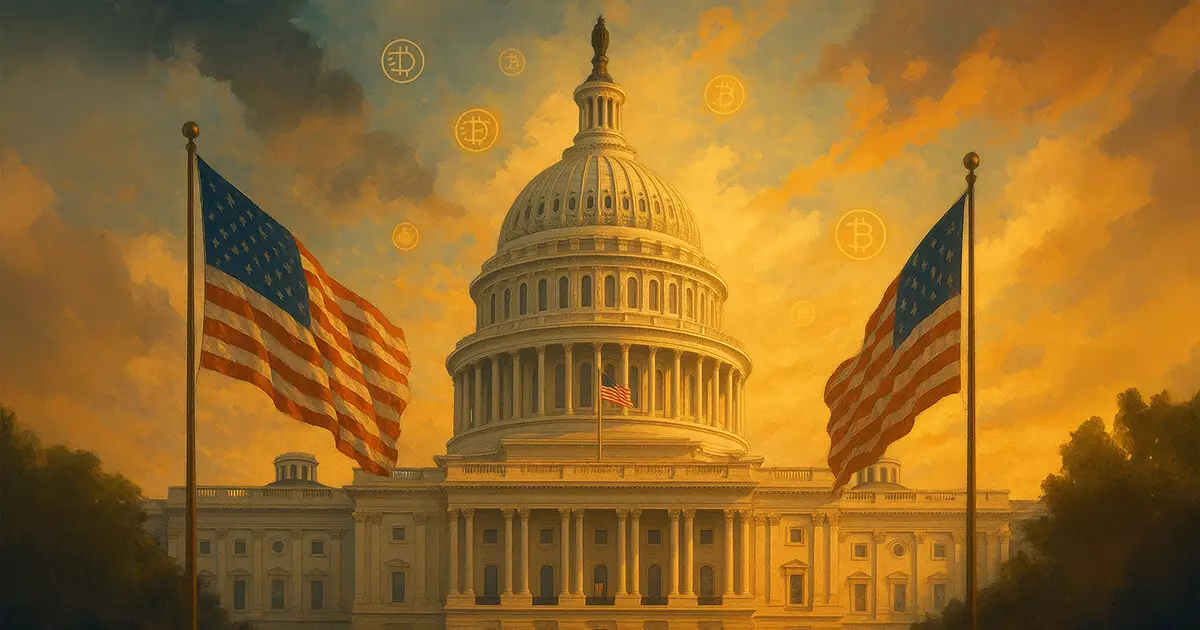In an audacious push to position the United States at the forefront of the digital economy, lawmakers have declared a special focus on cryptocurrencies through “Crypto Week.” This legislative initiative is more than just a passing celebration; it signifies a deliberate attempt to reshape the regulatory landscape, clarify ambiguities, and potentially channel the future of global finance. Central to this effort are three pivotal bills—the CLARITY Act, the GENIUS Act, and the Anti-CBDC Surveillance State Act—which together form a comprehensive framework that can either invigorate American innovation or entrench bureaucratic overreach.
At the heart of this initiative lies the CLARITY Act. For too long, the U.S. has been hamstrung by a confusing web of regulatory agencies with overlapping jurisdictions. This ambiguity has discouraged entrepreneurs, hampered investment, and created a precarious environment for responsible innovation. The Act’s bold proposition to clearly assign responsibilities—placing Bitcoin and similar assets under CFTC oversight while leaving securities to the SEC—aims to bring much-needed certainty. This division isn’t just bureaucratic housekeeping; it’s a strategic move to foster competitive clarity that could give U.S. digital asset markets a strategic edge globally. However, questions remain about whether such a rigid bifurcation could oversimplify complex assets that don’t always fit neatly into securities or commodities.
A Bipartisan Attempt at Building Stable Foundations
The GENIUS Act—an intriguing acronym—has emerged as a symbol of bipartisan consensus amidst a historically divisive political climate. By legislating a federal framework for stablecoins, it recognizes the importance of digital dollars in maintaining the U.S.’s monetary influence on the world stage. It sets caps, reserves, and supervisory authority, positioning the U.S. as a responsible leader whose rules support innovation without inviting chaos. While proponents see this as an essential step to legitimize dollar-backed digital assets, critics argue that government oversight might stifle innovation by adding layers of compliance that favor entrenched interests over startups.
Allowing federal and state agencies to co-regulate issuers is a pragmatic approach, blending innovation with oversight. But the real test will be whether these regulations are flexible enough to adapt to a rapidly evolving landscape—a tall order in an environment notorious for regulatory lag. If executed smartly, this could propel American companies to lead in stablecoin markets, reinforcing the dollar’s competitive edge in global digital trade.
The Privacy Dilemma and the Future of Digital Currency
The Anti-CBDC Surveillance State Act introduces a provocative, conservative stance into the debate—explicitly banning the Federal Reserve from issuing a central bank digital currency directly to individuals. This legislation is a direct response to fears that a U.S. CBDC could morph into a surveillance tool, eroding personal privacy and government accountability. From a libertarian-leaning perspective, this is a welcome move: it emphasizes individual sovereignty and property rights over centralized control.
However, critics within the center-right spectrum might argue that such a ban misses the opportunity to craft balanced regulations that protect privacy while enabling technological progress. A blanket prohibition could limit the U.S. from harnessing blockchain innovations that increase payment efficiency and security. Nonetheless, the emphasis on safeguarding privacy aligns with broader concerns about overreach and state surveillance. It reinforces the notion that financial tools should empower individuals—not turn them into data points for government monitoring.
This package isn’t just about technology; it’s a philosophical stance. It recognizes that the future of finance must be rooted in individual freedom and market trust—principles that resonate well with center-right principles favoring deregulation and the protection of personal rights.
Three Bills, One Direction: A Calculated Step Towards Economic Sovereignty
Together, these legislative efforts reveal a deliberate strategy: to reinforce the U.S.’s economic sovereignty in the burgeoning world of digital finance. By carving out clear boundaries for cryptocurrencies and stablecoins, and safeguarding against intrusive government surveillance, the U.S. is casting itself as an attractive hub for responsible innovation. Yet beneath these intentions lurks a tension—the balance between fostering a dynamic, competitive market and maintaining regulatory control.
The enthusiasm expressed by crypto influencers and industry advocates indicates confidence that these bills could catalyze growth and innovation. Yet, skepticism remains, centering on whether federal regulators possess the agility and foresight to oversee these new assets without choking their potential. The success of “Crypto Week” depends heavily on whether policymakers can avoid the pitfalls of overregulation, or conversely, dangerous laxity.
In essence, the legislative package underscores a broader ideological assertion: that technological progress must be accompanied by responsible governance—something the center-right spectrum should champion as a vital underpinning of economic stability and national resilience. Whether these bills will truly serve as a launchpad for American digital dominance or merely serve as cautionary tales about government overreach remains to be seen.

